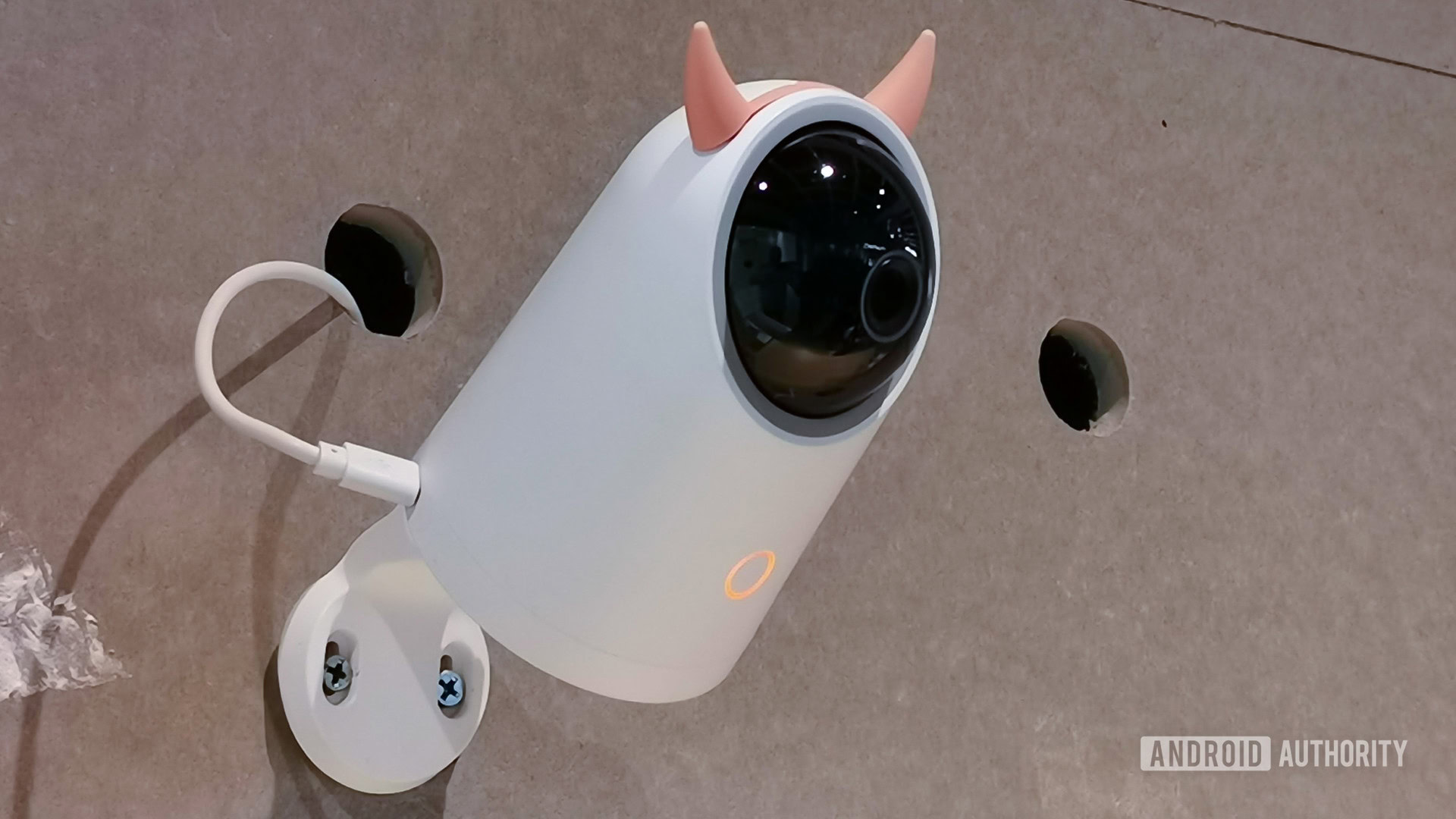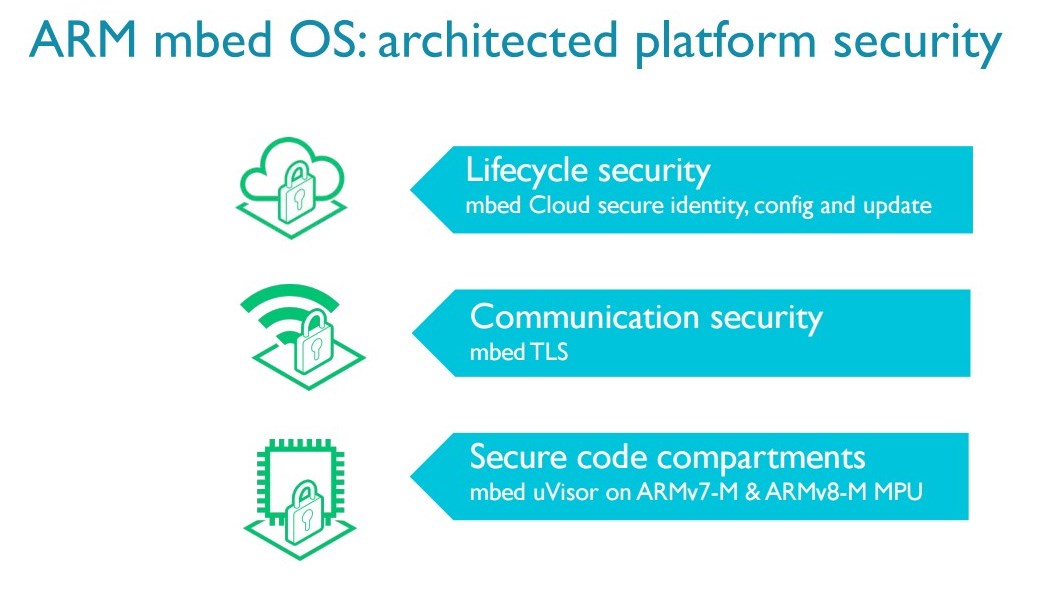Affiliate links on Android Authority may earn us a commission. Learn more.
IoT security: What you need to know

You have probably heard the term “the Internet of Things” (IoT) being bandied about. According to some, it is the next big revolution after mobile. For others, it is more hype than reality. The truth is somewhere in between. However, one thing is sure: the number of computing devices connected to the internet is growing, and growing fast. It used to be just computers — desktops, servers, and laptops — that were connected to the internet. Now almost everything has the potential to be online. From cars to door sensors and everything in between; there is now an untold number of devices with internet capabilities.
See also: What is the internet of things?
According to research, there were over seven billion connected devices in use worldwide at the end of 2016 and by the end of this year that number will reach 31 billion. The reason all these devices are being put online is so that they can send information into the cloud where it can be processed and then used in some useful manner. You want to control your thermostat from your phone? Easy! You want security cameras that you can check while you are away? Okay, as you wish.

IoT’s security challenges
There is one problem with all of this connectivity: the link flows in two directions. If a device can send data up into the cloud, then also it can be contacted from the cloud. In fact, many IoT devices are designed specifically so that they can be managed and used from the internet. And this is where the issue of security arises. If a hacker can control IoT devices, then chaos ensues. Sounds like a major IoT security nightmare, right?
Securing a system has traditionally been a battle of wits: the penetrator tries to find holes, and the designer tries to close them.Morrie Gasser, Building a Secure Computer System
And that is what we saw way back in 2016 when cyber-criminals launched a distributed denial of service (DDoS) attack on Dyn, a DNS provider for Twitter, SoundCloud, Spotify, Reddit, and others. A DDoS attack aims to disrupt internet services (like websites) so that users can’t access them. This brings frustration for the users and potential financial loss for the website. We call these attacks “distributed” because they use multiple (like thousands or tens of thousands) computers across the world in a coordinated attack. Traditionally, these computers have been Windows desktop PCs that have been infected with malware. At the right time, the malware is activated and the PC joins a “botnet,” which is a network of remote machines (bots) that stage the attack.
Why the attack on Dyn was different
DDoS attacks aren’t new, but there was something very special about the attack on Dyn. It was launched not via PCs, but via connected devices like DVR security cameras or network-attached storage devices. According to security expert Brian Krebs, a piece of malware has been developed that scans the internet for IoT devices and tries to connect to those devices. If a device allows some kind of simple access, using factory default username & passwords, then the malware connects and inserts a malicious payload.
The DDoS attack on Dyn was in 2016. Have things changed since then? Yes and no. In March 2017, Dahua, a leading maker of internet-enabled security cameras and digital video recorders, was forced to ship a series of software updates to close a gaping security hole in many of its products. The vulnerability allows an attacker to bypass the login process and gain remote, direct control over the systems. So the good news is that Dahua actually shipped a software update. However, the bad news is that the flaw which prompted the need for an update is described as embarrassingly simple.
And here we get to the crux of the matter. Way too many connected devices (like millions of them) grant access over the internet using either a default username and password, or by using an authentication system that can be easily bypassed. Although IoT devices tend to be “small,” we mustn’t forget they are still computers. They have processors, software, and hardware, and are vulnerable to malware just like a laptop or desktop.
Why IoT security gets overlooked
One of the characteristics of the IoT market is that these “smart” devices often need to be cheap, at the consumer end at least. Adding internet connectivity is a selling point, maybe a gimmick, but certainly a unique proposition. However, adding that connectivity isn’t just about running Linux (or an RTOS) on a processor and then adding some web services. Done correctly, the devices need to be secure. Now, adding IoT security isn’t hard, but it is an extra cost. The foolishness of a short-term view is that skipping the security makes the product cheaper, but in many cases it can make it more expensive.

Take the example of the Jeep Cherokee. Charlie Miller and Chris Valasek famously hacked the Jeep Cherokee using a remotely exploitable vulnerability. They told Jeep about the problems but Jeep ignored them. What Jeep actually thought of Miller and Valasek’s research is unknown, but not much was actually done about it. However, once the details of the hack were made public then Jeep was forced to recall over a million vehicles to fix the software, which apparently cost the company billions of dollars. It would have been much cheaper to do the software right in the first place.
In the case of the IoT devices used to launch the Dyn attack, the cost of the security failures isn’t being borne by the manufacturers, but by companies like Dyn and Twitter.
IoT security checklist
In light of these attacks and the current poor state of security on the first generation of IoT devices, it is essential that IoT developers heed the following checklist:
- Authentication — Never create a product with a default password that is the same across all devices. Each device should a have a complex random password assigned to it during manufacturing.
- Debug — Never leave any kind of debugging access on a production device. Even if you are tempted to leave access on a non-standard port using a hard-coded random password, in the end it will be discovered. Don’t do it.
- Encryption — All communications between an IoT device and the cloud need to be encrypted. Use SSL/TLS where appropriate.
- Privacy — Ensure that no personal data (including things like Wi-Fi passwords) is readily accessible should a hacker gain access to the device. Use encryption for storing data along with salts.
- Web interface — Any web interface should be protected against the standard hacker techniques like SQL injections and cross-site scripting.
- Firmware updates — Bugs are a fact of life; often they are just a nuisance. However, security bugs are bad, even dangerous. Therefore, all IoT devices should support Over-The-Air (OTA) updates. But those updates need to be verified before being applied.
You might think that the list above is only for IoT developers, but consumers also have a role to play here by not purchasing products that don’t offer high levels of security awareness. In other words, don’t take IoT security (or the lack thereof) for granted.
There are solutions
The initial reaction of some IoT developers (and probably their managers) is that all this IoT security stuff is going to be costly. In one sense yes, you are going to need to devote man hours to the security aspect of your product. However, it isn’t all up hill.
There are three ways to build an IoT product based on a popular microcontroller or microprocessor, like the ARM Cortex-M range or the ARM Cortex-A range. You could code it all in assembly code. Nothing stopping you from doing that! However, it might be more efficient to use a higher-level language like C. So the second way is to use C on bare metal, meaning you control everything from the moment the processor boots. You need to handle all the interrupts, the I/O, all the networking etc. It is possible, but it is going to be painful!

The third way is to use an established Real-Time Operating System (RTOS) and its supporting ecosystem. There are several to choose from including FreeRTOS and mbed OS. The former is a popular third-party OS that supports a wide range of processors and boards, while the latter is ARM’s architected platform which offers more than just an OS and includes solutions for many of the different aspects of IoT. Both are open source.
The advantage of ARM’s solution is that the ecosystems covers not only developing software for the IoT board, but also solutions for device deployment, firmware upgrades, encrypted communications, and even server software for the cloud. There are also technologies like uVisor, a self-contained software hypervisor that creates independent secure domains on ARM Cortex-M3 and M4 micro-controllers. uVisor increases resilience against malware and protects secrets from leaking even among different parts of the same application.
Even if a smart device doesn’t use an RTOS, there are still lots of frameworks available to ensure that IoT security isn’t overlooked. For example, the Nordic Semiconductor Thingy:52 includes a mechanism for updating its firmware via Bluetooth (see point six of the IoT checklist above). Nordic has also published sample source code for the Thingy:52 itself as well as sample apps for Android and iOS.
Wrap-up
The key to IoT security is to change the mindset of the developers and to inform consumers of the dangers of buying insecure devices. The technology is there and there is really no barrier to getting hold of that technology. For example, during 2015, ARM bought the company that made the popular PolarSSL library just so it could make it free in mbed OS. Now, secure communications is included in mbed OS for any developer to use free-of-charge. What more can you ask for?
I don’t know if some form of legislation is required in the EU or in North America to force OEMs to improve IoT security in their products, I hope not, but in a world where billions of devices are going to be connected to the internet and in turn somehow connect with us, we need to ensure that the IoT products of the future are secure.
For more news, stories, and features from Android Authority, sign up for the newsletter below!